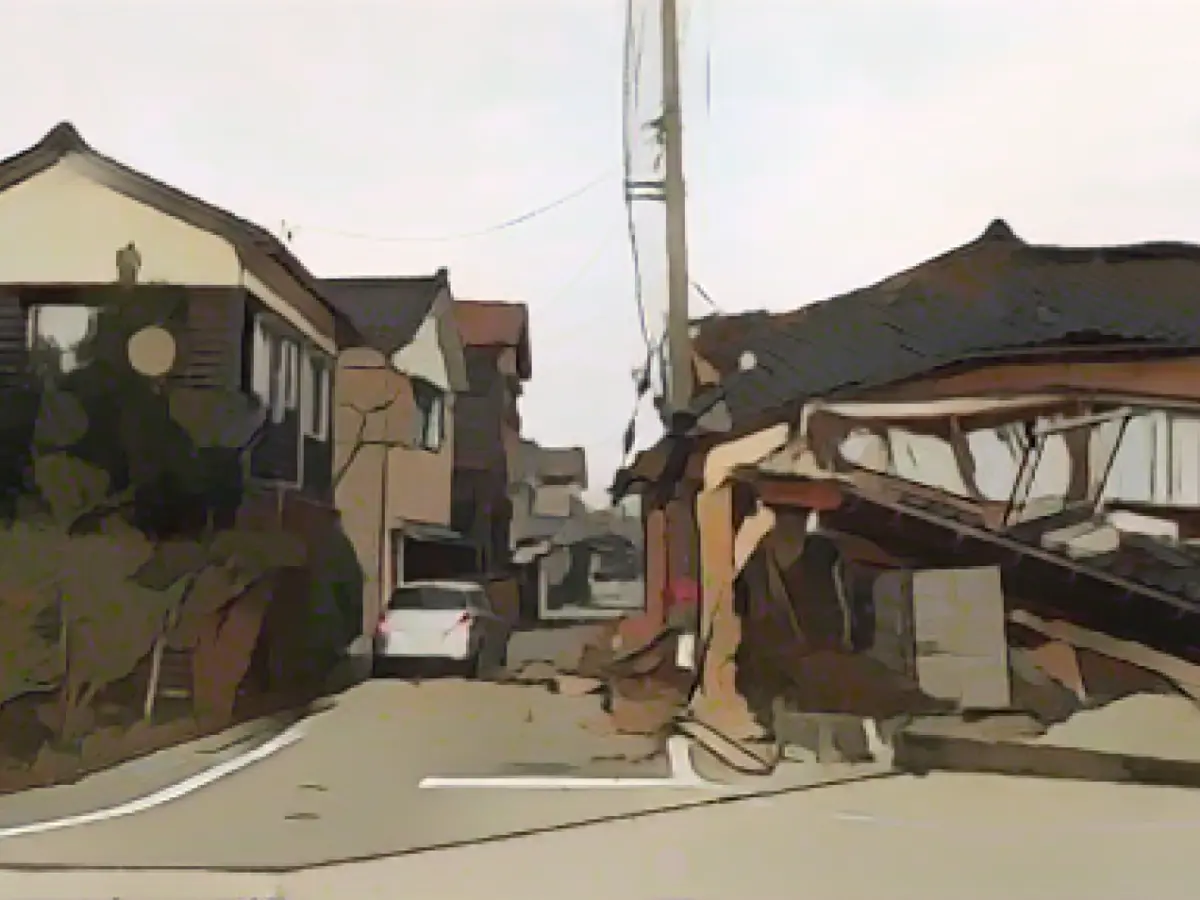Pacific Tsunami Warning Center largely gives the all-clear after earthquake in Japan
The tremors caused by the earthquakes caused houses to shake even in the capital Tokyo, as journalists reported to the AFP news agency. The exact extent of the damage caused by the natural disaster was initially unclear. Photos published by the "Yomiuri Shimbun" newspaper from Wajima in Ishikawa Prefecture showed a partially collapsed house and deep cracks in the streets. According to television reports, a house in Wajima also caught fire.
A video was published on the online network X showing a row of toppled wooden houses. One voice comments: "This is the Matsunami district of Noto. We are in a terrible situation. Please come and help us."
A series of severe earthquakes shook the Noto region in Ishikawa Prefecture on New Year's Day. The Japanese Meteorological Agency recorded a total of 21 earthquakes with a magnitude of over 4.0 within just over an hour and a half. According to the agency, the most severe quake occurred at around 4.10 pm (local time, 8.10 am CET) and had a magnitude of 7.6. The US earthquake monitoring system USGS gave the magnitude as 7.5.
Residents of the affected areas were then urged on Japanese radio stations to seek immediate safety in higher areas.
The operation of nuclear power plants in Japan was not affected by the earthquakes and tsunamis, according to preliminary information from the government. However, the earthquakes caused a power outage in around 33,500 households. Roads were closed and train services were canceled.
Japan is located on the so-called Pacific Ring of Fire, where tectonic plates collide. Earthquakes and volcanic eruptions occur frequently in this area. For this reason, strict building regulations apply in Japan and earthquake drills are held regularly.
On March 11, 2011, the east coast of Japan was hit by a magnitude 9.0 earthquake and a tsunami. The natural disaster claimed the lives of 18,000 people. The tsunami also hit the Fukushima nuclear power plant, causing huge explosions and a meltdown in three reactors. It was the world's worst nuclear accident since the Chernobyl disaster in 1986.
Read also:
- This will change in December
- Fireworks and parties ring in 2024 - turn of the year overshadowed by conflicts
- Attacks on ships in the Red Sea: shipping companies avoid important trade route
- Houthi rebels want to launch further attacks despite international coalition
- The earthquake in Japan prompted the Pacific Tsunami Warning Center to issue a warning to Hawaii and other coastal areas in the Pacific.
- Japan, being situated on the Pacific Ring of Fire, is no stranger to natural disasters such as earthquakes and tsunamis.
- In response to the tremors, residents were advised to seek higher ground by Japanese radio stations.
- The Pacific Tsunami Warning Center largely gave the all-clear after assessing the data from the earthquake in Japan.
- The natural disaster in Japan, while causing damage and disruption, did not result in any significant tsunami in the Pacific.
- According to reports, the Pacific Tsunami Warning Center in Hawaii monitors seismic activity and issues warnings when necessary.
- The Yomiuri Shimbun reported that the tsunami warning was issued due to the potential for a tsunami to hit the coast of Japan.
- AFP, a global news agency, disseminated news about the earthquake in Japan, including the tsunami warning issued by the Pacific Tsunami Warning Center.
Source: www.stern.de







